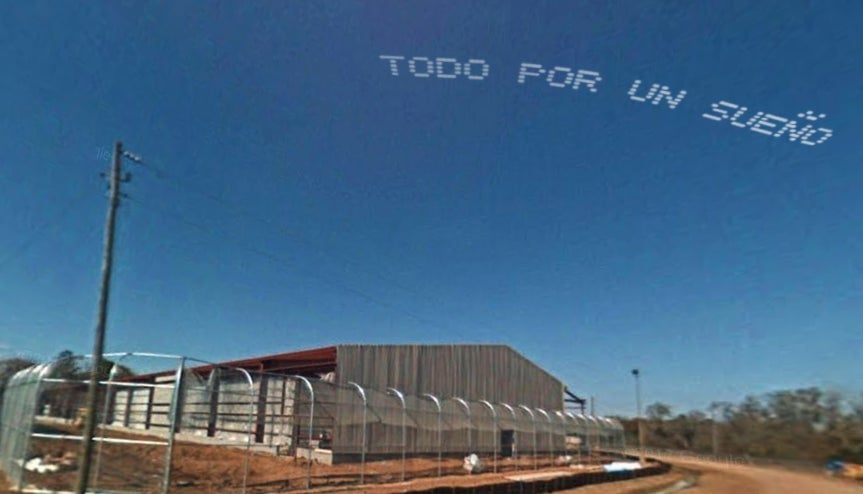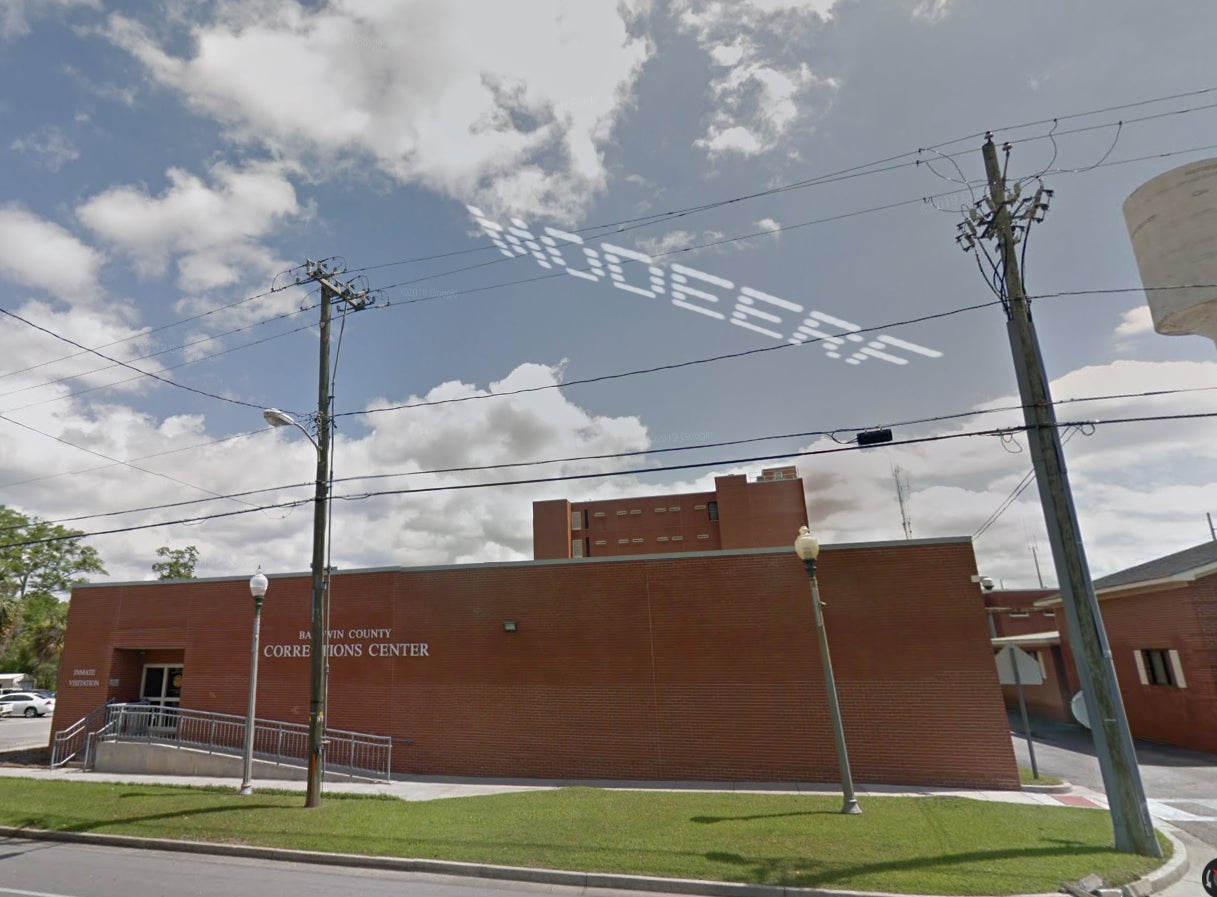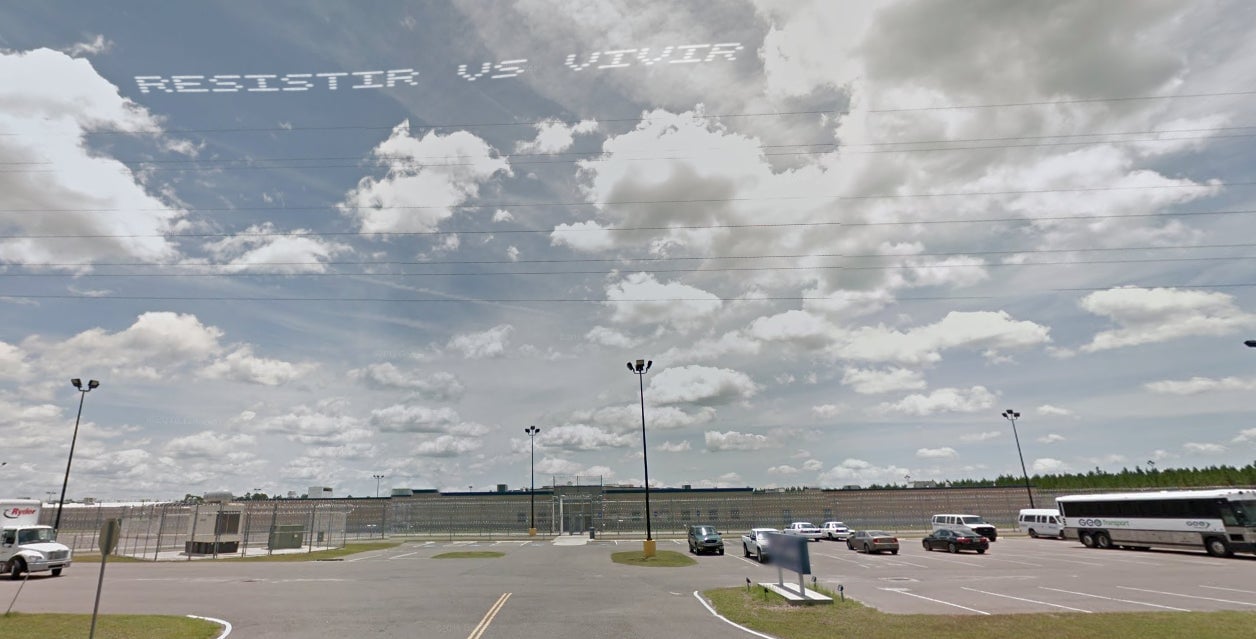For Independence Day, skytypers will expose immigrant jails across the US
Starting today, fleets of skytypers will be flying across the United States to project messages over hidden immigrant detention camps, immigration courts, and former Japanese internment camps. The aerial spectacle, called “In Plain Sight,” is planned for 80 sites on July 3 and 4, coinciding with Independence Day weekend in the US. The ambitious project took a year to plan, and is one component of an artist-led protest against immigrant detention and America’s mass incarceration problem.


Starting today, fleets of skytypers will be flying across the United States to project messages over hidden immigrant detention camps, immigration courts, and former Japanese internment camps. The aerial spectacle, called “In Plain Sight,” is planned for 80 sites on July 3 and 4, coinciding with Independence Day weekend in the US. The ambitious project took a year to plan, and is one component of an artist-led protest against immigrant detention and America’s mass incarceration problem.
In Texas, for instance, the phrase Nosotras te vemos, justice for Roxana (We see you, Justice for Roxana) will appear over a US Immigration and Customs Enforcement (ICE) processing center. The message alludes to Roxsana Hernandez Rodriguez, a 33-year old Honduran asylum seeker who died in ICE’s custody two years ago. About 60 miles away, “Abolish ICE” will hover over a detention center in the town of Encinal.
In New York City, the words “My pain is so big” will be written over a detention center in downtown Brooklyn. “To be human,” will appear over Rikers Island and “Carlos Ernesto Escobar Mejia,” the name of the first immigrant to die from Covid-19 in detention will be projected at the Statue of Liberty monument in Ellis Island.

The US has the highest incarceration rate in the world, with over 2.2 million adults in jail. A recent report authored by the American Civil Liberties Union, Human Rights Watch, and the National Immigrant Justice Center outlined how the Trump administration’s anti-immigrant policies have radically worsened the problem.
“‘In Plain Sight’ is a necessary project that I felt compelled to initiate,” explains Rafa Esparza, a first-generation Mexican American artist based in Los Angeles. “I believe no journey is illegal and no journey across manmade borders should be criminalized.”
“The purpose of this work is designed to inform you about the shocking number of migrant detention centers in the US which are funded by your tax dollars,” adds Cassils, a performance artist and bodybuilder who co-organized the project with Esparza. “Add Covid-19 to the mix and what was once a humanitarian crisis becomes a human rights violation.”
Esparza and Cassils recruited 80 artists to come up with messages for each location. The roster includes painter Titus Kaphar, performance artist Dread Scott, and Black Lives Matters co-founder Patrisse Cullors. Each aerial message will be appended by the hashtag #XMAP.
A tricky maneuver
Skytyping, or digital skywriting, is done by five planes flying in formation at an altitude of 10,000 ft. With the aid of a computer, they emit timed pulses of vapor to form words—akin to the action of a dot matrix printer. Each letter takes about four seconds to make, with a completed message measuring about five miles wide and remain visible anywhere from eight to 20 minutes for 30 miles in any direction, depending on weather conditions. Compared to the beleaguered art of skywriting, skytyping remains a popular form of aerial advertising, reaching even for audiences glued to their mobile phones.
“I can get everybody to look up,” says Shane Rogers, VP of advertising at Skytpers, the California-based company who worked on the project. “If we fly over and start typing a message, you’ll see that 90% to 95% of people will look up. We’re really the only medium anymore that’ll get somebody to look away from a digital device,” he says. Skytypers takes on a variety of assignments, from national advertising campaigns to splashy album-release gimmicks to marriage proposals. They own the global patent to the technology developed by Anthony Stinis in 1964. A former pilot, Rogers says he’s thrilled with the revival of aerial advertising and encouraged by news about London lifting a 60-year ban on skywriting in March.
From a business standpoint, being conduits for a politically charged protest can be tricky. “We try to stay as neutral as we can,” Rogers tells Quartz. “I’m a firm believer in free speech, but we’re an unfiltered medium,” he explains. Aerial messages aren’t typically censored by an external agency; in the US, the Federal Trade Commission regulates aerial commercial advertising, but not political messages.

Though some overt messages are included (“Abolish ICE,” for instance), Rogers says he flagged more incendiary phrases with the artists. “We’re the last censor or filter before a message goes into the sky. We’ve just kind of drawn lines in the sand and try to explain where we’re all coming from,” he says. “I don’t want anybody to come out of this feeling like we’ve done harm to anybody, especially in these times.” (Rogers noted that Skytypers wasn’t involved in the aerial banners flown after George Floyd’s death.)
Apart from untangling the hairball logistics of getting pilots in place amid a pandemic, Rogers is looking forward to raising awareness. “I didn’t know there was as many [immigration] facilities as there are,” he says. “I’m in Southern California. I see it day in and day out, but I never really put much thought into it. So I would hope that at least people take the time to think about it and make their own decision on how they feel.”
The list of locations and skywriting schedules are posted on the project website.